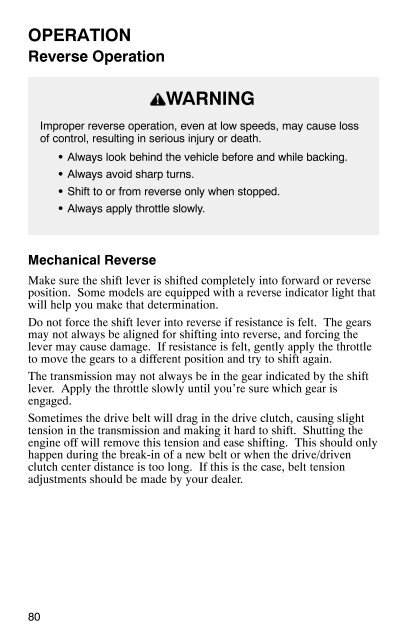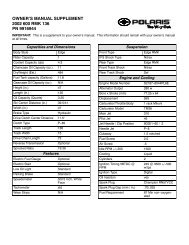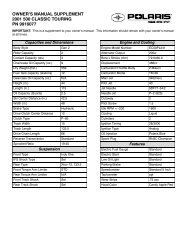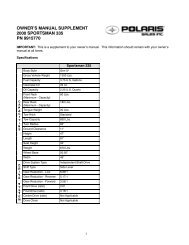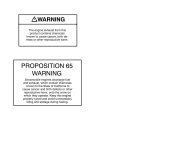maintenance - Polaris
maintenance - Polaris
maintenance - Polaris
Create successful ePaper yourself
Turn your PDF publications into a flip-book with our unique Google optimized e-Paper software.
OPERATION<br />
Reverse Operation<br />
WARNING<br />
Improper reverse operation, even at low speeds, may cause loss<br />
of control, resulting in serious injury or death.<br />
S Always look behind the vehicle before and while backing.<br />
S Always avoid sharp turns.<br />
S Shift to or from reverse only when stopped.<br />
S Always apply throttle slowly.<br />
Mechanical Reverse<br />
Make sure the shift lever is shifted completely into forward or reverse<br />
position. Some models are equipped with a reverse indicator light that<br />
will help you make that determination.<br />
Do not force the shift lever into reverse if resistance is felt. The gears<br />
may not always be aligned for shifting into reverse, and forcing the<br />
lever may cause damage. If resistance is felt, gently apply the throttle<br />
to move the gears to a different position and try to shift again.<br />
The transmission may not always be in the gear indicated by the shift<br />
lever. Apply the throttle slowly until you’re sure which gear is<br />
engaged.<br />
Sometimes the drive belt will drag in the drive clutch, causing slight<br />
tension in the transmission and making it hard to shift. Shutting the<br />
engine off will remove this tension and ease shifting. This should only<br />
happen during the break-in of a new belt or when the drive/driven<br />
clutch center distance is too long. If this is the case, belt tension<br />
adjustments should be made by your dealer.<br />
80


